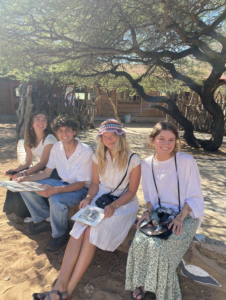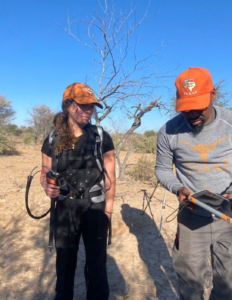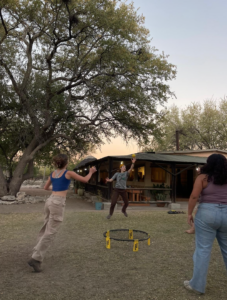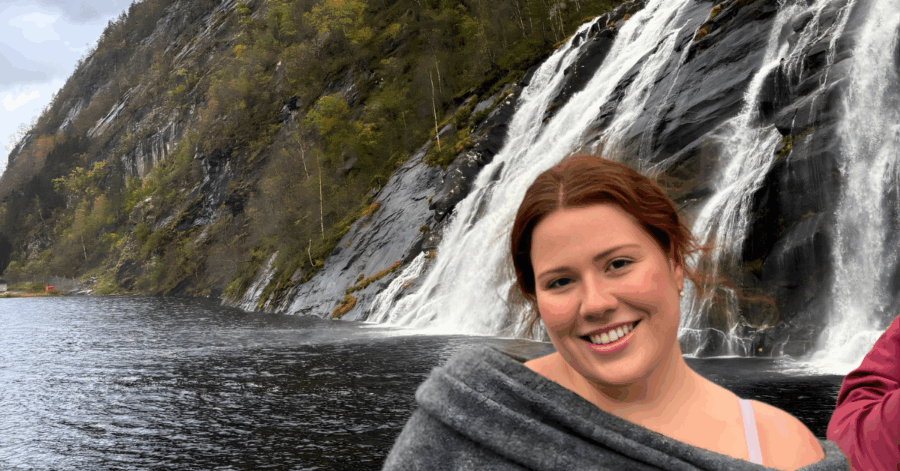
I’ve never flown by myself before, let alone taken four international flights to a continent I’ve only seen in movies. Despite not knowing what to expect, I traveled to Maun, Botswana, for a once-in-a-lifetime study abroad experience.
Landing in the dusty village of Maun with a few other students, nervous and excited at the same time, I passed through customs to meet our professor, Dr. Meyer, with whom we would spend the next six weeks.
During our time in Botswana, we have moved around the country to study several different regions. Our first site, Thakadu Bush Camp in Ghanzi, is located on a ranch four hours away from Maun.
On the bus ride there, we passed through communal grazing land to giant commercial ranches, observing the drastic change in the landscape that we would soon learn was due to grass loss from overconsumption by livestock in communal areas.

After arriving at the Thakadu campsite, we set up our tents, each containing two mattresses, a set of blankets, a pillow and a towel for the communal showers. After I settled in, I got to know my tentmate and fellow classmates since we would be spending the coming weeks in very close proximity to each other.
We talked around the campfire, discussing our favorite movies, games and what we each expected from this trip. At exactly 7 p.m., the dinner bell rang, and we gathered around a long rectangular table for a course of soup, followed by a wonderful meal prepared by the kitchen staff that evening. We eventually settled into a routine at camp and became accustomed to the cattle bell calling us for dinner each night.
Speaking of routine, a typical day at Thakadu starts with breakfast at 7:30 a.m., usually oatmeal, toast and coffee, followed by fieldwork at 8:15 a.m. In the field, we mainly focus on collecting ecological data for land studies and use drones to conduct hyperspectral imaging, a technique that collects and processes information in an image. This data helps equip Dr. Meyer with the information required to determine how the ecology persists in harsh conditions.
Immediately following our work, we answer the cowbell and have lunch around noon. Then, at 2 p.m. we sit for an informative lecture by Dr. Meyer and other student presentations about the topic of the day. I recently gave my first presentation on Indigenous rights and how they affect different groups in Botswana. Finally, after dinner we huddle around the fire, telling stories and roasting marshmallows, surrounded by the sounds of jackals, to complete the day.
The days generally leave us with several hours of free time between lunch and lectures, and after dinner. What people do during this time varies. Most people have personal errands, but sometimes we go down to the local restaurant, which is only a few hundred yards from camp, to relax or play card games.

One of my favorite things we did was create a Spikeball tournament, which became quite competitive for the grand prize, a box of cookies. Unfortunately, my team did not make the finals.
The local restaurant also has interesting foods that we’ve slowly gained the confidence to try, such as kudu, ostrich, zebra, gemsbok and several other game animals that are kept on the property. We often see live herds of wildebeest, kudu and zebra getting a drink at the watering hole nearby. It’s truly amazing to see these animals so close.
Near the end of our stay in Ghanzi, we started learning about the native culture that exists here. We visited the museum and culture center in the village of Dekar. The museum featured the history and artifacts of the San people, such as beading, instruments and hunting gear.

We also visited the Kuru Art Center in Dekar, where 19 artists are employed. They use several different media to create art that can be sold all over the world to help support the local village.
These paintings are full of colorful animals and plants depicted in a style that can be described as a mix of abstract and realism. Several other students and I bought some eye-catching prints in the gift shop.
I’ve already learned so much on this trip and cannot wait to learn more. After leaving Ghanzi, we will drive to the Central Kalahari Game Reserve for a safari, hoping to see lions, giraffes and elephants. Then we will continue our way through Botswana, eventually ending back in Maun.
Although it’s not ideal to wash laundry by hand or take semi-cold showers, this trip is an experience I wouldn’t trade for the world. I’ve met so many amazing people and have already learned so much.
This unique study abroad experience has allowed me to not only see a part of the world I’ve never been to but also understand different points of view. They say you never come to Africa just once, and I very much hope this is the case. I am so excited to see what is to come as this adventure continues.
This post was contributed by Kaitlyn Troy, a Global Ambassador for Summer 2024. Kaitlyn is a freshman environmental science studies major studying abroad in Ghanzi, Botswana.





